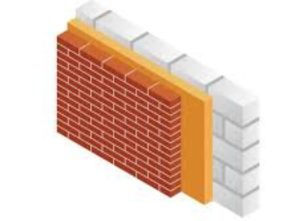Stone masonry is the oldest form of masonry. Stone blocks are cut and shaped by hand, then assembled to form walls.
Stone Masonry is a traditional building method that has been used for centuries all over the world. It’s still in use today, but it’s also being used in new ways as an art form or for special architectural features.
What is Stone Masonry?
Stone masonry is also defined as a building masonry that is constructed by using stone and stones are bounded by using mortar.
How Long Have People Used Masonry Of Stone?
Stone masonry has been used for centuries, dating back to the Roman Empire. The Romans were responsible for developing many of the techniques that we still use today.
It is a very popular technique in architecture and construction because it is durable and lasts a long time.
Why is Stone Masonry Still Relevant Today?
Stone masonry is a traditional construction technique that has been used for centuries. It consists of building structures with stones or bricks. Stone masonry is still relevant today, as it’s an eco-friendly and sustainable construction technique.
Masonry stone creates a more durable structure that can withstand extreme weather conditions, earthquakes, and fires better than other building techniques such as concrete or steel.
The material of stone masonry is also recyclable which means that it doesn’t add to the growing landfill problem in our world today. Masonry of stone is still relevant today because it’s an eco-friendly and sustainable solution for building new structures. Materials used in stone masonry can be recycled and made into a number of other products.
How to Choose the Right Stone for Your Project?
Stone will be an integral part of your home or office space. It is important to choose the right stone for your project. There are many types of stones available in the market, but it is important to know their pros and cons before you make a purchase.
Some stones are natural and others are man-made. Natural stones like marble, granite, slate, limestone, and soapstone come from quarries while man-made stones like concrete or terrazzo come from factories.
Natural stones have a variety of colors while man-made stone has a uniform color. Natural stones need proper care, but man-made ones don’t require too much maintenance.
Different types of stone masonry can be explained in this article. We are going to explain the different types of rubble masonry and ashlar masonry. We can talk about them in detail, too, and use sub-types to clarify anything that may have been confusing. Important points related to each type will also be covered so keep reading!
Types of stone masonry used in construction
There are two main types of stone masonry:
- Rubble masonry
- Ashlar Masonry
Rubble Stone Masonry
Stones with irregular shapes and sizes are called rubble masonry. These types of stones brought from the quarry may be used directly in masonry or may use in masonry work after breaking them with a hammer to the required size. The size should be less than 250 mm.
The strength of rubble masonry depends on the following points.
- Quality of mortar
- The Frequent use of through stone in masonry.
- Proper filling of mortar between stones
Coursed Rubble Masonry
In Coursed Rubble Masonry the height of stones is 5 cm to 20 cm. Masonry is done in layers. At a certain level height of the stones should be the same. Coursed Rubble Masonry is done in public houses and residential houses.
The three types of Coursed rubble masonry are following.
First-class coursed rubble Masonry
For these masonry types, all the stones have the same height.
Each Course is the same Height. The thickness of the mortar should be below 10 mm.
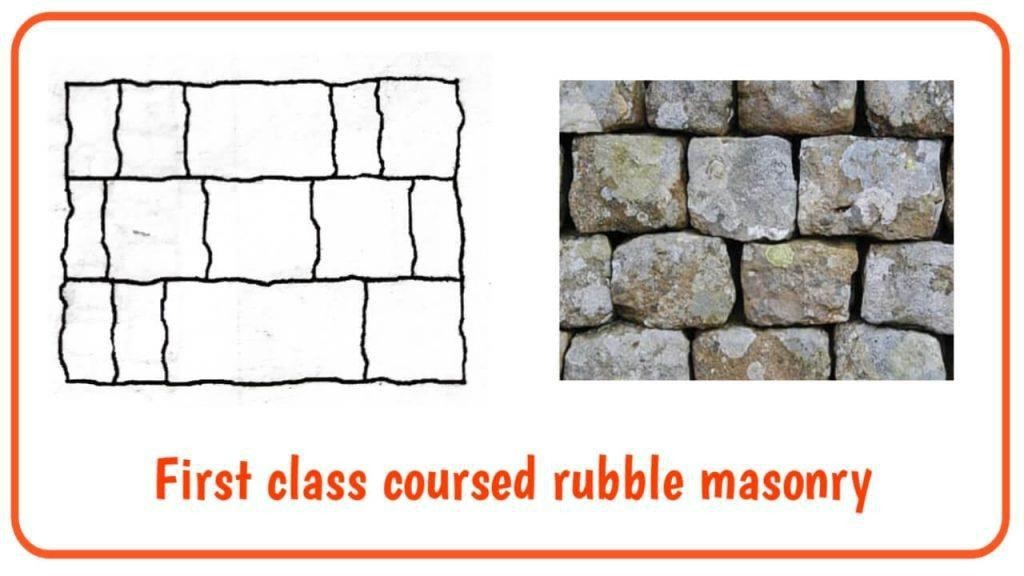
Second class coursed rubble masonry
- In this type of stone masonry, the stones have different heights.
- Not all courses have the same height.
- Only 2 stones are used to get a course height.
- The thickness of the Mortar joints should be 12 mm

Third class coursed rubble masonry
- In this type of masonry, the stones have different heights.
- The minimum height of the stone should be 5 cm.
- All Layers without the same height.
- Only 3 stones are used to get a course height.
- Mortar joint thickness should be 16 mm.
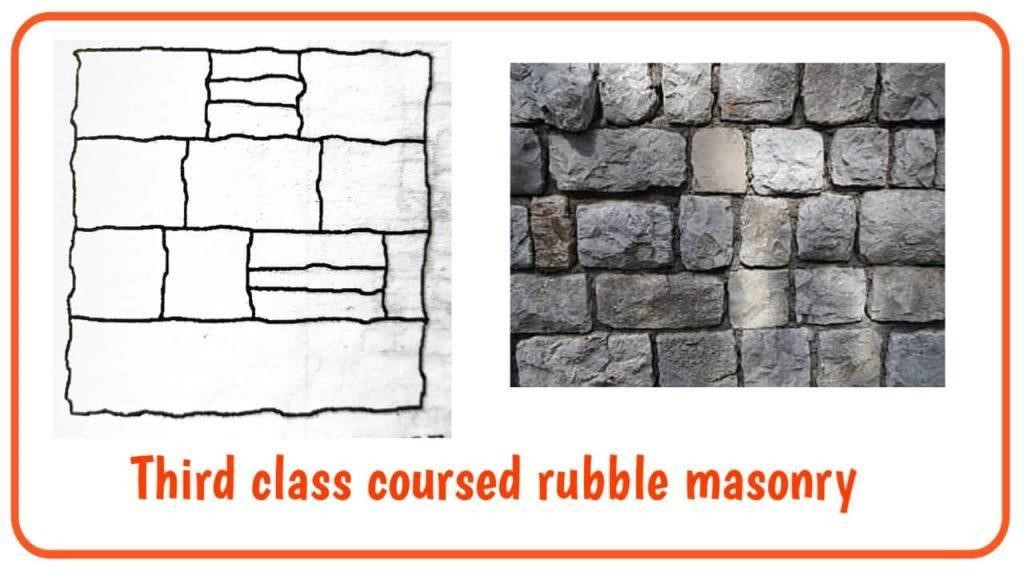
Un-coursed Rubble Masonry
- For these specific types, Stones without dressing. But, the corners of the stones are removed with the help of a hammer and then used.
- Masonry’s work without occurring in layers.
- The cavities between large stones are filled with small stones.
- The masonry height should be equalized every 40 cm to 50 cm.
- This type of stone masonry is used in the compound walls, warehouses, garages, small houses, etc.
- This type of masonry is very cheap.
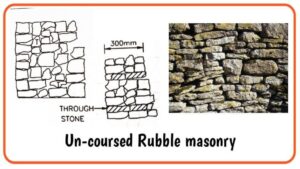
Random Rubble Masonry
- This type of stone masonry involves arranging stones of irregular shapes and sizes to create an aesthetic-looking wall.
- If it is made with a hammer and the pure thickness of the joint is not more than 12 mm, it is called second-class random rubble masonry.
- This type of masonry is used for residential buildings, compound walls, warehouses, etc.
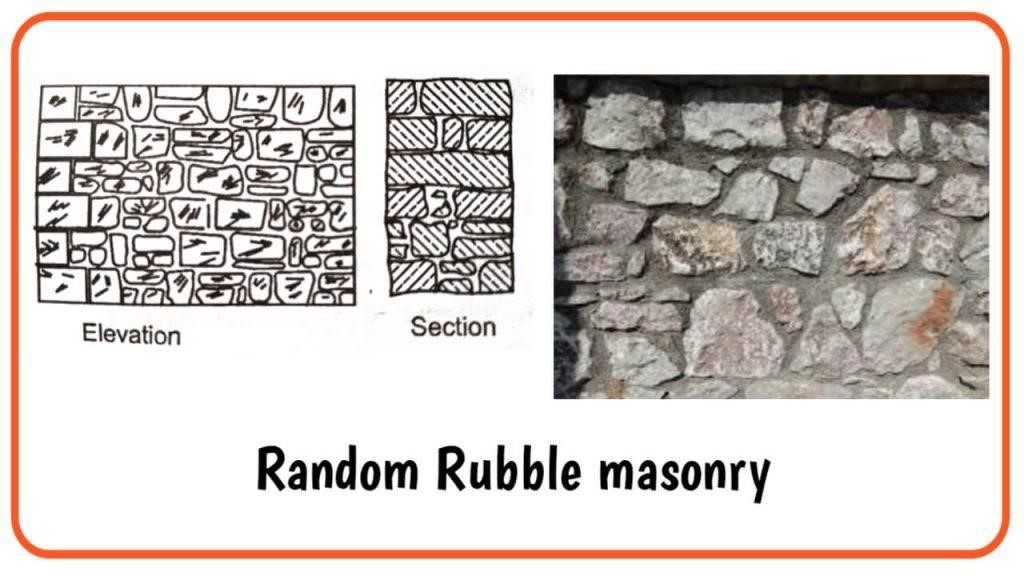
Dry Rubble Masonry
- Dry rubble Masonry is similar to the third-class coursed masonry.
- This type of masonry is very cheap but requires skilled labor.
- Compound walls used this type of masonry.
- Masonry of 50 cm in length at the top and at the ends is done with mortar to prevent the shifting of stones and make the work richer.

Polygonal Rubble Masonry
- In this type of masonry, the stones are hammer-dressed.
- Polygon rubble masonry requires more skilled labor.

Flint Rubble Masonry
- Flint is a silica stone. They are around 80 mm to 150 mm thick and between 50 mm to 300 mm long.
- Such stones are hard but break very quickly.
- Arrangements should be layered or non-layered.
- Long stones should be placed at a distance of 2 m from the floor to increase the strength of the flint wall.
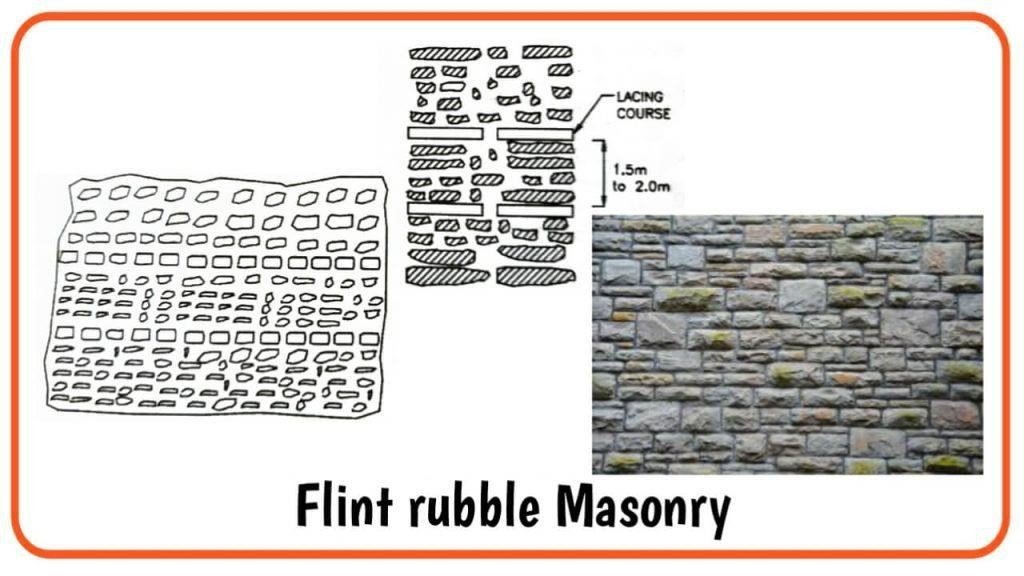
Ashlar Stone Masonry
- This type of masonry uses square or rectangular stones.
- Stone’s Height is between 25 cm to 30 cm.
- The length of the stone should not exceed 3 times the height.
Types of Ashlar masonry
Ashlar masonry Types are the following.
- Ashlar fine
- Ashlar rough tooled
- Ashlar quarry faced
- Ashlar chamfered
- Ashlar facing
Ashlar fine
- In the Ashlar fine, the stone is chisel-dressed on both sides and ends.
- The layer’s Height does not exceed 30 cm.
- All courses have the same height.
- Call joints Thickness does not exceed 3 mm.
- Masonry has a good aesthetic view.
- Masonry has costly.
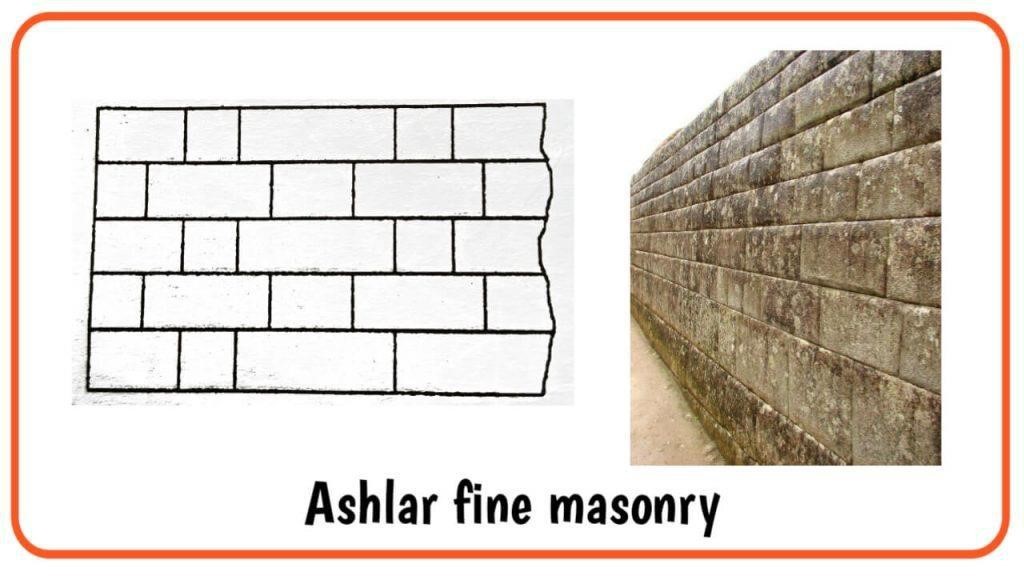
Ashlar Rough Tooled
- This type of stone masonry has stone beds and sides chisel-dressed while the surface is rough with a tool.
- All four sides of the stone with a wide range of 25mm chisel while and also and the middle part is rough with the tool.
- Thickness restricts to 6mm.
- The masonry of this type is also called bastard ashlar.
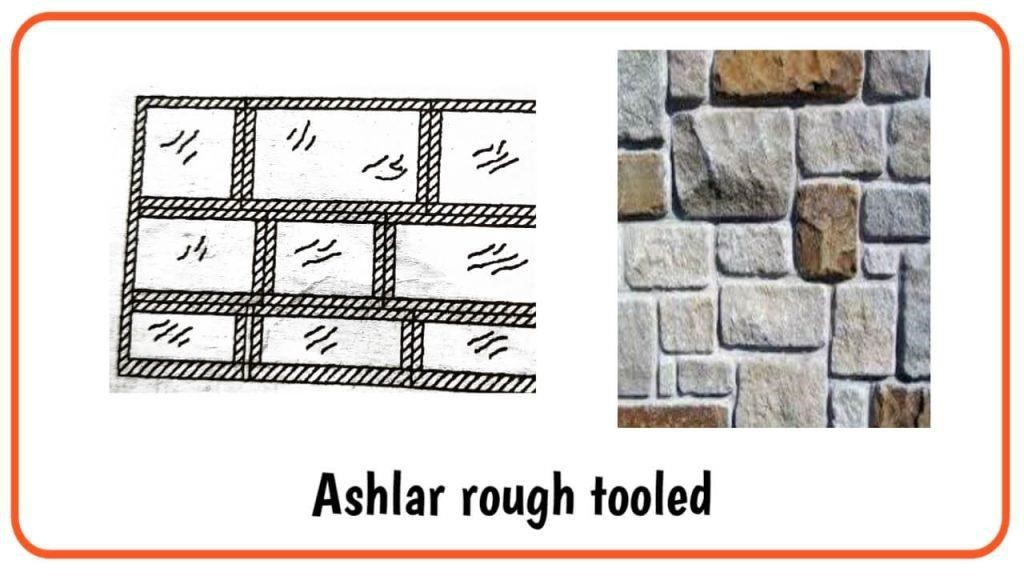
Ashlar quarry faced
Ashlar quarry faced masonry a 25 mm wide strip is made with a chisel on all sides on the surface visible outside the stone.

Moreover, the central part of the surface of this masonry is kept the same as that extracted from the stone quarry. More than 80 mm projection was removed with a hammer.
Ashlar Chamfered
In This type of masonry, a 25 mm wide strip around the outer surface of the stone is made with a chisel.
Strip chamfered at an angle of 45 to 25 degrees and depth should be 25mm. And 12 mm wide strip is carved around the middle of the surface.
The central part of the surface of this masonry is always kept the same as that extracted from the stone quarry.
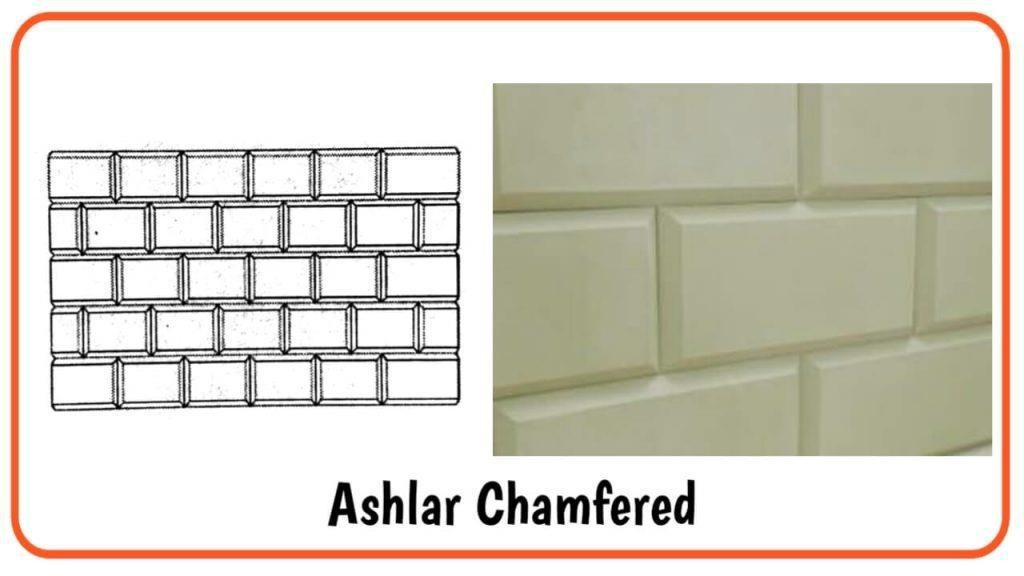
Ashlar Block In Course Masonry
- In this type of masonry, the thickness of the course is 20 cm to 30 cm.
- The stone face is hammer-dressed.
- The thickness of the joints does not increase beyond 6 mm.
- This masonry is used in most heavy engineering constructions like maintenance walls, coastal walls, railway stations, bridges, etc.
Ashlar facing
Ashlar facing masonry, the outside part of the masonry is made of stone masonry and the back part is made of brick masonry. So that the good aesthetic views of Ashlar masonry can be obtained at a low cost.
The height of the course should be greater than 20 cm.
Wall thickness is 75 cm, and the bond stone entire thickness of the wall.

Tools Used in stone Masonry
- Mason Hammer
- Club Hammer
- Spalling Hammer
- Scrabbling Hammer
- Point Chisel
- Clow Chisel
- Plane Chisel
- Bolster Chisel
- Drafting Chisel
Read About: Brick Masonry
Stone Masonry Benefits and Advantages
Masonry of stone is one of the most durable and long-lasting materials available. It can be used in a wide variety of applications, from foundations to walls to fireplaces to chimneys.
It has a number of advantages over other building materials.
It is non-combustible, so it provides excellent protection against fire.
Stone also resists decay and erosion, so it stays strong for decades or even centuries.
And it is an excellent insulator, which means that it keeps heat inside and reduces heating costs for homeowners during the winter months.
It also provides a natural barrier against outside noise pollution from traffic or construction work, which can be distracting or disruptive to residents living nearby
Conclusion – Why Should You Choose Stone Masonry?
Stone is a traditional building material, but it is also one of the most durable. It has been around for centuries and it has proven to be a very reliable material. The durability of stone masonry is due to the fact that it can withstand natural disasters, such as hurricanes and earthquakes. It is also resistant to fire and heat.
Stone Masonry is:
– Durable
– Resistant to natural disasters
– Resistant to fire and heat


